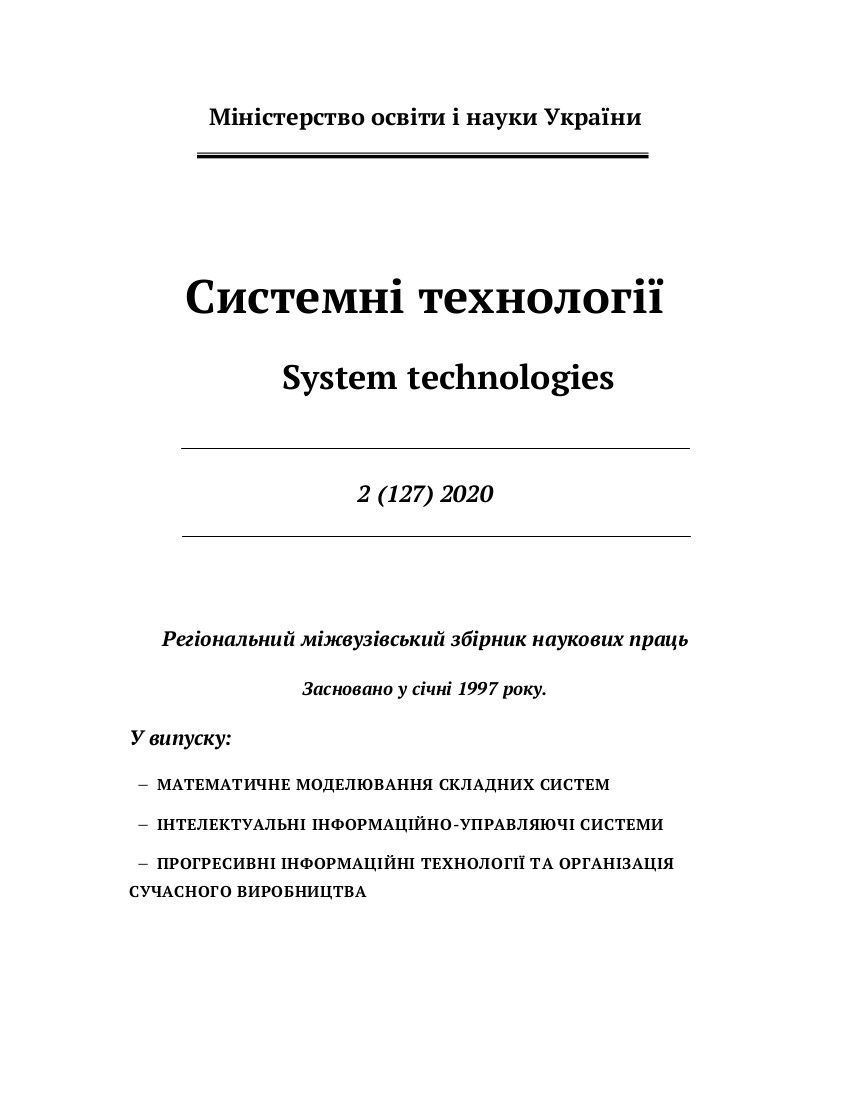Моделювання інтерцепторного регулювання напряму вектора тяги ракетного двигуна
DOI:
https://doi.org/10.34185/1562-9945-2-127-2020-09Ключові слова:
управление вектором тяги, комбинированная система, интерцептор, вдув газа, моделирование, визуализация теченияАнотація
Система комбінованого керування вектора тяги ракетного двигуна з використанням твердих перешкод (інтерцепторів) при одночасній інжекції через них відпрацьованого генераторного газу або рідких компонентів ракетного палива є перспективною. Для космічної ступені ракет великі інтерцептори здатні парирувати обурення від асиметрії мас, яка виникає при виведенні корисного вантажу і зборі космічного сміття.
Розроблено модель газодинамічного способу управління напрямком вектора тяги, заснованого на висунення в надзвуковий потік продуктів згорання ракетного палива інтерцепторів. Інтерцептор висувається в сопло двигунної установки, в середній його частини ближче до критичного перетину. Проведено чисельне моделювання та візуалізація течії в соплі двигуна при висуненні цільного інтерцептора і інтерцептора з отвором, через який в при шар вдувається газ назустріч потоку продуктів згоряння.
Шляхом порівняння створюваних елементарних бічних зусиль показана можливість підвищення ефективності керування напрямком вектора тяги за допомогою висунення інтерцептору зі вдувом газу.
Посилання
The new concept of thrust vector control for rocket engine / N.D. Kovalenko, Ю. Д. Sheptun, T.A. Kovalenko, G.A. Strelnikov // Системні технології. – 2016. – № 6 (107). – С. 120-127.
Ihnatyev O.D. About modifications of a promising thrust vector control system for the engine of the third stage of the Cyclone-3 launch vehicle /O.D. Ihnatyev, N.P. Syrotkina, N.D. Kovalenko//Tech.mech.–2016.–№ 4.–P.14 –23.
Strelnikov G.O. Gas flow control in rocket engines / G.O. Strelnikov, O.D. Ihnatyev, N.S. Pryadko, O.L. Tokareva, N.P. Syrotkina // Tech. mech. – 2018. – № 3. – P. 59 – 68.
Strelnikov G.O. To the block diagram development of a bifunctional thrust vector control system of rocket engine / G.O. Strelnikov, O.L. Tokareva, N.S. Pryadko, O.D. Ihnatyev // Tech. mech. – 2018. – № 4. – P. 57 – 67.
Tokareva E.V. BTVCS functional circuit on one control channel of the mid-flight space rocket stage engine / Tokareva E.V., Ternova E.V., Pryadko N.S., Strelnikov G.A. // System technologies № 6 (119). – 2018. – P. 89 – 93.
Kovalenko N.D. Thrust vector control system for a liquid-propellant rocket engine of a launch vehicle space stage in the event of mass asymmetry / N.D. Kovalenko, U. D. Sheptun, Syrotkina N.P. // Bulletin of the Dnepropetrovsk University. Space rocket technology. -– 2016. – Vol. 24, № 4. – P. 33 – 44.
Kovalenko N.D Rocket engine as an executive body of a missile flight control system/N.D. Kovalenko // Dnepropetrovsk.: ITM NASU and NSAU, 2004.- 412p.















